
Bikes and mopeds have their own lane.
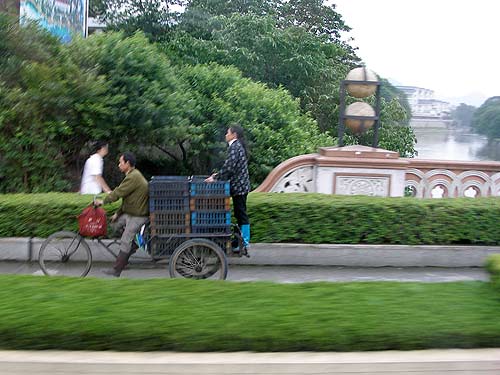
Safety laws are a bit different here.

In the evening there was a river excursion to watch the cormorant night fishing. At dusk, we boarded a small ferry that cruised alongside several fishermen with their rafts.

The ferry
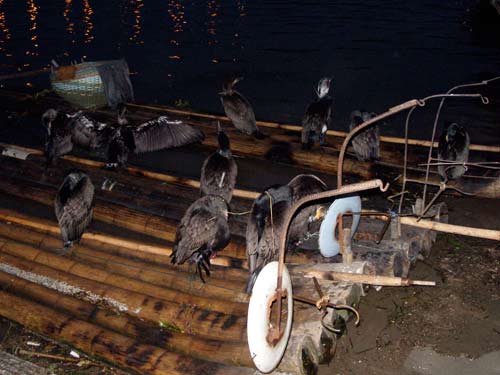
This evening's crew of working cormorants
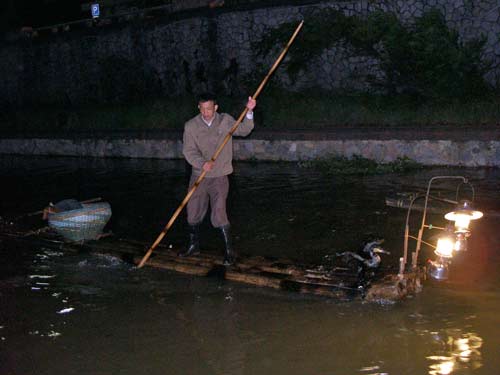
Using a pole, the fisherman slowly glides down the river on his raft.
This used to be very good business. One family might have up to 200 birds. The fish would be dried and preserved. Fishermen would spend a lot of time with the birds to have them imprint on them. Nowadays, a family might only have 5 - 20 birds and they don't spend much time to train them anymore.
A good fishing bird can catch 10 pounds of fish in one hour. A bird will live 15 - 20 years, and will often still be fed by the fisherman even when it gets old and can no longer work.
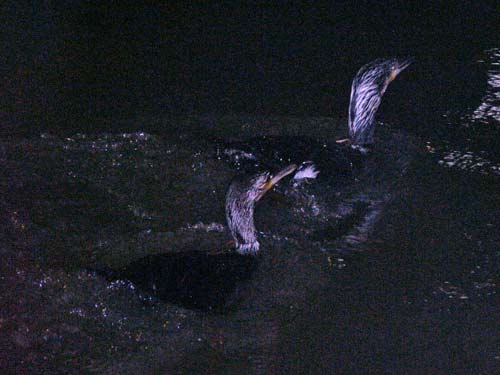
The birds dive under the water in search of fish.
The birds generally work about 2 - 3 hours per night and then get fed. They rest during the day. That's not because they are nocturnal, but because:
1) The fishermen prefer not to work in the heat of the day.
2) At night, the fish sleep at the bottom of the river. When they get agitated by the fishermen's poles in the water, they come to the surface in groups, making them easier for the birds to catch.
3) The fish are still alive to sell at the morning market.
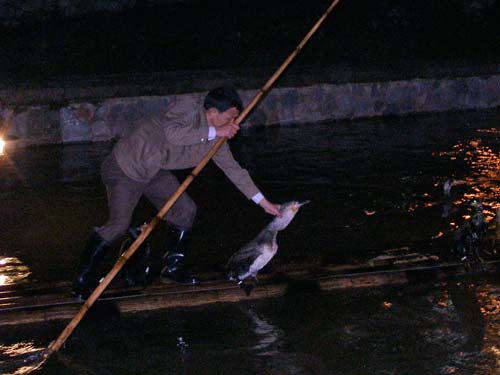
A bird with a fish stuck in its throat
To control the birds, the fishermen tie a snare near the base of the bird's throat. Though this prevents the birds from swallowing larger fish, which are held in their throat, the birds are still able to swallow smaller fish. When a cormorant has caught a fish in its throat, the fisherman brings the bird back to the boat and has the bird spit the fish back up.
Since the rivers have been overfished by the locals, they must be stocked for the birds to have something to catch for the tourists. 20 year ago, a fish could get as large as 7 pounds and two birds would have to work together to get it back to the boat. The fish are much smaller now.
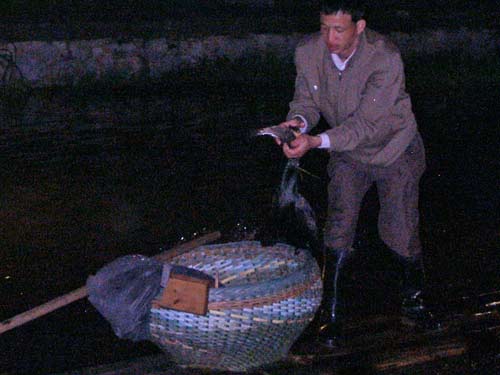
The fisherman picks up the bird, jostles the fish out of its throat and into the basket, and then returns the bird to the water to fish some more.
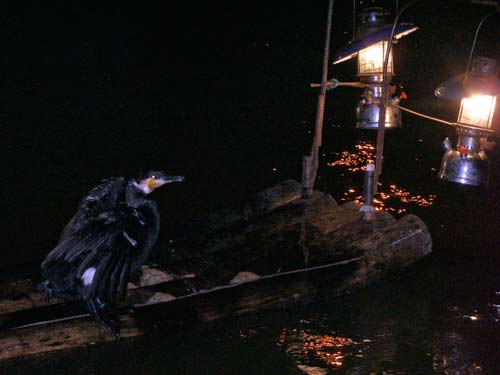
A bird gets a free ride while it dries its wings after a catch.
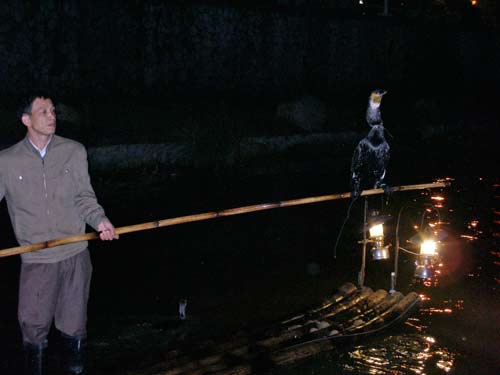
We closed the day by watching the waterfall at our hotel. The deluxe five-star hotel is the largest in province, with over 2,600 rooms. Every evening, an artificial waterfall runs down its side.

The hotel during the day

The interior of the hotel is hollow. Glass elevators run guests up and down.

Enormous artwork of the local mountains spans nine floors.

A view from the room
At 8 pm, water flows over the top of the roof and cascades down the side of the hotel. Listed in the Guiness Book of Records, it is almost 150 feet high and around 240 feet wide. The ripples of water are ccompanied by some classical music.
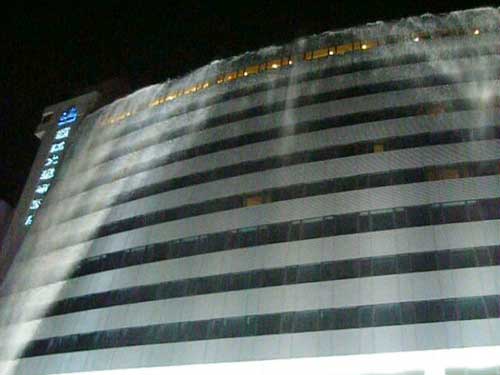
The water begins...
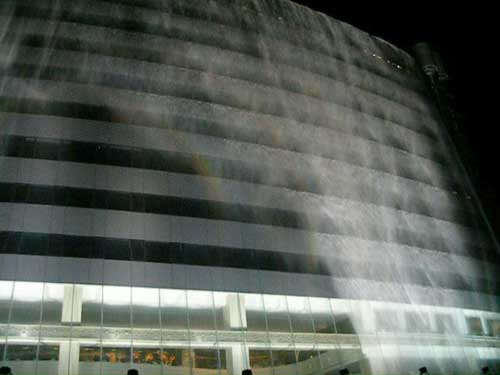
... reaches the bottom...
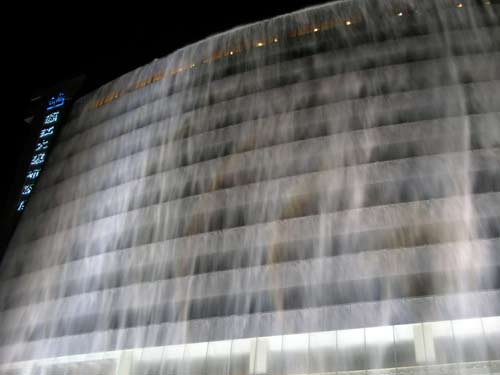
... and eventually covers the enormous building entirely.

A view from one of the hotel rooms of the pagodas in Fir Lake

